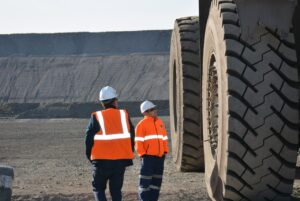KEY RESULTS
After 28 weeks:
2X
Daily wrench time increased
50%
Backlog reduced
57%
Risk reduced
40% to 90%
Schedule attainment increased
30%
Direct labour cost improvement
About The Client
Our client is a UAE-based district cooling company that provides sustainable, energy-efficient, cost-effective, and innovative cooling solutions to government, commercial, residential and private organizations in the GCC (Gulf Cooperation Council).
Through its infrastructure network, the client supplies customers with chilled water used for air conditioning. They also design, build and operate district cooling plants specifically commissioned for certain projects, or convert existing projects from traditional cooling systems to district cooling.
The client’s portfolio comprises 76 plants across five GCC countries, delivering over 1.16 million tons of cooling to its customers. However, they also operate in a competitive market — one where reliability and productivity of district cooling at the lowest prices are key. To sustain its current market position and meet future challenges, the client needed to capitalise on opportunities to improve the effectiveness and efficiency of the maintenance process.
What Was Discovered
We were brought in for a two-week analysis of the client’s maintenance functions. We worked together with the client to review management system elements by conducting various studies, both in the plants and offices. After accumulating more than 318 hours of observations, our field studies showed wrench time of around 30%. The analysis also identified opportunities for improvement in systematic planning, preparation, costs, execution, supervision, and behaviour.
Bolstered by these results, the client initiated on an ambitious 28-week transformation project that aimed to double the wrench time by structurally improving performance management, work planning, preparation, organization, process supervision and reporting/analysis.
How We Helped
The project team consisted of key maintenance players from the client’s side, combined with three of our consultants. In the initial stages, we trained and coached the client-side team members in methodologies, behavioural change techniques,
supervisory skills and problem-solving tools. A project management structure was put in place to validate and review progress, under guidance of our project manager and the client’s Senior Manager for Technical Services.
The 8-week pilot project was split into two workstreams:
- Maintenance Excellence and Management Control System (MCS)
This workstream oversaw construction and piloting of both the maintenance process and MCS. At the same time, they were also setting up a new time horizon-based organization to guarantee the required focus on maintenance reliability engineering, planning, scheduling, and execution. - Site Execution
This workstream implemented active supervision techniques for supervisors, along with techniques for capturing losses in wrench time and schedule attainment.
An executive steering committee met fortnightly to provide strategic direction and take key decisions. They also validated the results of the pilot project, ultimately giving the go-ahead to fully roll out the designed processes, organisation, and management control system (MCS).
What Was Implemented
The rollout covered the whole of the UAE during the annual peak demand period. The first focus was on implemented “a single way of working” with regards to the efficiency of the maintenance process. At the same time, the shift to the new maintenance organisation covered validation of final job descriptions to ensure the effective uptake of their new accountabilities. This ensured that the actual transition towards the new organisation processes happened smoothly without impacting reliability and productivity. This included monitoring four distinct KPIs:
- Training plan compliance
- Coaching compliance and active supervision
- Operational KPIs to measure actual performance improvement (wrench time, reduced risk, reduced cost, and improved scheduled attainment)
- Sustainability and progression towards the top of the maintenance pyramid.
“Recognition of the behavioural factor is essential to achieve great results. From “implementing active supervision” to “people selection based on people strengths,” we nailed every aspect of this project — it thanks to the insights of Renoir.”
SVP, Operations & Maintenance
The Results
The results were extremely encouraging. After 28 weeks
2X
Daily wrench time increased
50%
Backlog reduced
57%
Risk reduced
40% to 90%
Schedule attainment increased
30%
Direct labour cost improvement
These results also translated into long-term benefits:
Reducing overdue work orders had a positive impact on reliability and productivity.
Reducing the backlog by 50% meant that the client now had a “healthier” backlog of 3 weeks.
The overtime halved in comparison to the same period a year earlier. The realized cost improvement would then be used to reduce cost and invest into the future operations of the client.
The operational KPIs have been structurally embedded into the maintenance management system, fostering further performance improvements.










